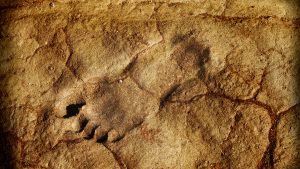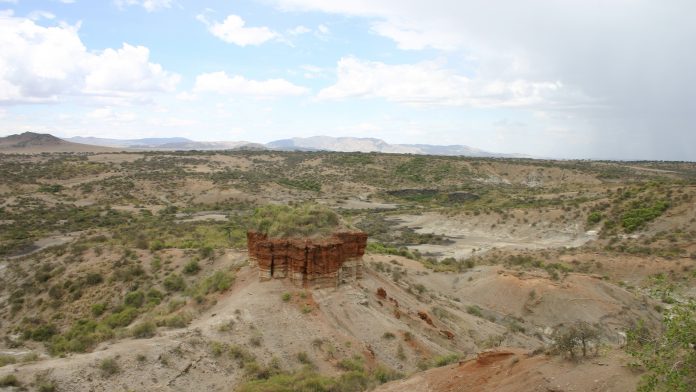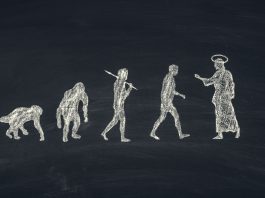Professor Sally Reynolds, from Bournemouth University’s Department of Archaeology and Anthropology, spoke to The Innovation Platform’s International Editor, Clifford Holt about the link between the landscape and human evolution.
Human evolution is a subject that has been explored for some time now. Since even before the time of the renowned naturalist Charles Darwin, the links between animals (and indeed plants) and their ancestors were being made, and their physical developments inferred, charted, and commented upon.
Along with – and inextricably linked to – the evolution of a species is the habitat in which that species prevails. This, again, is not new knowledge; should an environment, for instance, become inhospitable – whether through climate change, natural events such as volcanoes and earthquakes, or a decline in prey/overabundance of predators – then the species in question must relocate or risk extinction.
This presents an interesting way of exploring the evolution of hominins – our human ancestors. As Professor Sally Reynolds, Principal Academic in Hominin Palaeoecology and Head of the Institute for Studies of Landscape and Human Evolution at Bournemouth University’s Department Archaeology and Anthropology, told The Innovation Platform’s International Editor, Clifford Holt: “One of the most important elements of our ancestors’ habitats is their choice of landscape. This dictates access to specific food resources, prey availability, and presence of predators – many of whom are still extant species and whose behaviour is well studied.
“Were they living in grassland savannah? Or deep forest? Did our earlier ancestors originate in deep forest habitats and move onto open grassland plains, as some of the earliest scholars like Raymond Dart suggested?”
Modern tools for historical explorations
Reynolds and her team employ various tools and methods to better understand this relationship between hominins and their landscape. These include:
- Dental enamel microwear – microscopic scratches on teeth show what type of food was eaten in the weeks before death. In the case of herbivores, this might indicate the prevailing vegetation at the time; and
- Remote sensing – creating a time series can help to see how water propagates through a landscape and how the vegetation in such regions behaves.
With regards to remote sensing, satellite imagery is freely available, and Reynolds and her team are thus able to take a time series approach to look at how a single landscape (like the Okavango Delta, for instance) changes in terms of vegetation over a single year, or even several decades. She explained: “We can use an approach of analogies, for example comparing aspects of what we see in the past record of Olduvai Gorge appear similar to that of the present day Okavago Delta. We can use this approach to create a framework for understanding some of the key features preserved at Olduvai Gorge.”
Other GIS based approaches, such as Least Cost Path analysis, are also used to help develop a better understanding of the key routes and access to regions of interest to human evolution, Reynolds added. “We also make great use of SfM (Structure from Motion) photogrammetry techniques to capture and digitise rare and fragile exposed human footprints which will start to erode as soon as they are exposed to air. Work like that taking place at White Sands National Park, New Mexico, USA, means that fragile prints would be lost if we could not digitally record and preserve them.”

A focus on Africa
The paleoanthropological site self-proclaimed as the Cradle of Humankind is located northwest of Johannesburg, South Africa (Reynolds’ home country), with scientists announcing in 2015 the discovery of an ancient species called Homo naledi, which many now believe to be one of the earliest members of the human genus.
Africa thus clearly plays a huge part in the human evolution story. Reynolds began her career at Sterkfontein, a site very close to her birthplace, but has since expanded her research to look at sites in East Africa, where, in 1959, Louis Leakey and his wife, Mary, discovered an australopithecine skull in Tanzania’s Olduvai Gorge, and where Dr Donald Johanson and his graduate student, Tom Gray, discovered the famously bipedal ape Lucy, which is perhaps the most well-known human ancestor fossil, while walking across 3.2 million year old sediments at the site of Hadar, Ethiopia.
More recently, Reynolds has also focused on the landscape at sites in Tibet and White Sands. “Each site presents a snapshot of humans and hominins engaging with specific landscapes that offered them something: security, a range of food resources, and the possibility of hunting large animals. These landscapes were attractive, and the question is why? Why there and not elsewhere?” she said.
Climate change
How the climate has changed over time is an important element of Reynolds’ work, as is the effect this had on human evolution. This can also have implications for the future. Indeed, several of her students are working on the environments associated with the earliest signs of conflict and warfare and, according to the Professor, the reason is simple: “Competition for scarce resources (water, space, food, grazing for cattle, access to medicine, etc.) will always be a possible trigger for violence to erupt. This is as true back in the epi-Palaeolithic in Sudan where one of the earliest war cemeteries (at a site called Jebel Sahaba) is located, as it is today. Very little has changed. Perhaps learning more about the context for past friction can help us navigate an uncertain future where expanding numbers of humans will complete for finite resources.”
The future
Moving forwards, Reynolds will continue to explore those landscapes that have special properties (like the Okavango) and which appear to be somewhat resistant to larger-scale environmental and climatic pressures. “Could these refugia explain why certain landscapes, such as Olduvai Gorge, are so closely linked with human evolution?” she asks.
It is questions such as these which provide an added element of intrigue and which stand to shed even more light on how our ancestors were affected by changes to the landscapes in which they lived.
Professor Sally Reynolds
Principal Academic in Hominin Palaeoecology
Head, Institute for Studies of Landscape and Human Evolution
Department Archaeology and Anthropology
Faculty Science and Technology
Bournemouth University
+44 (0) 1202961916
sreynolds@bournemouth.ac.uk
Tweet @bournemouthuni
www.bournemouth.ac.uk/research/
centres-institutes/institute-studies-landscape-human-evolution
Please note, this article also appears in the fifth edition of our quarterly publication.









